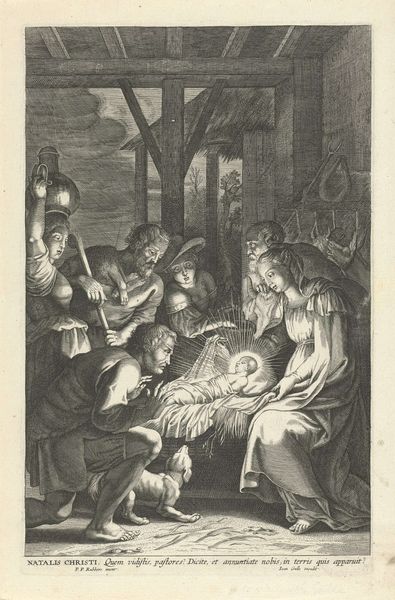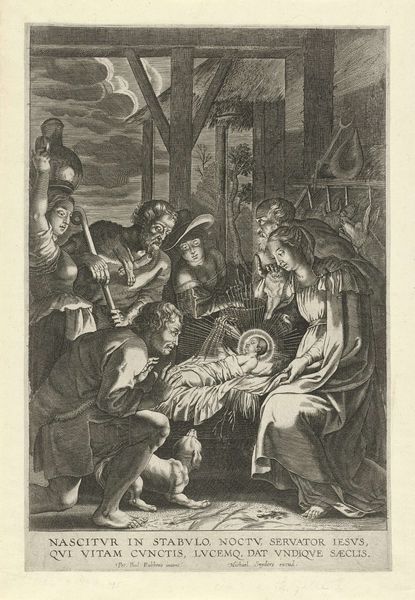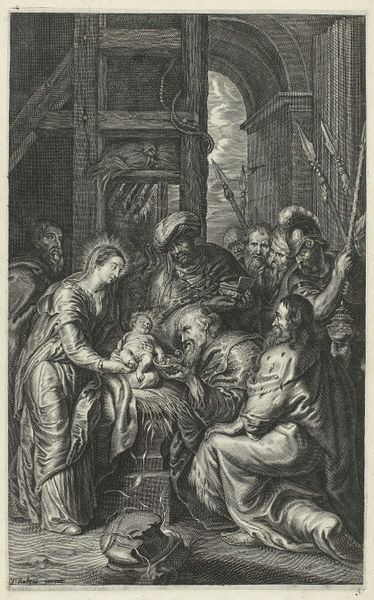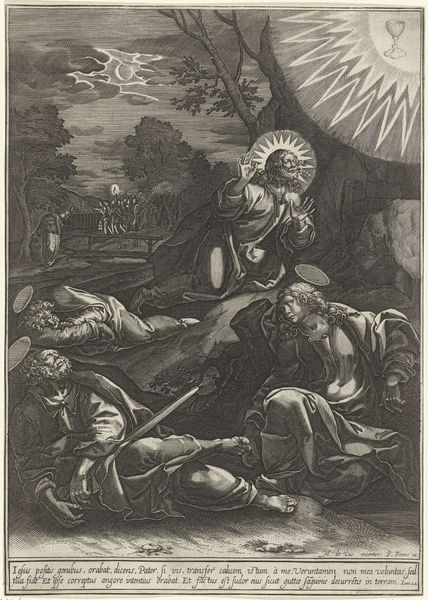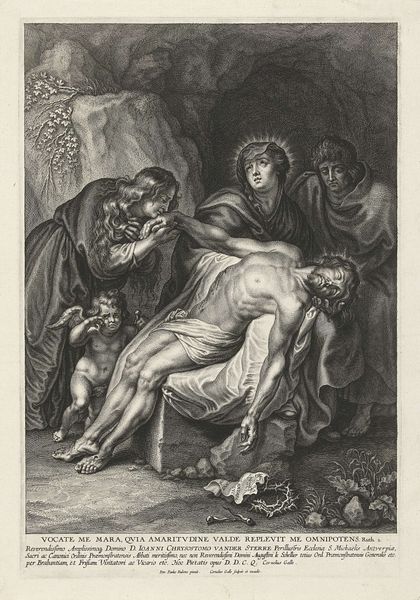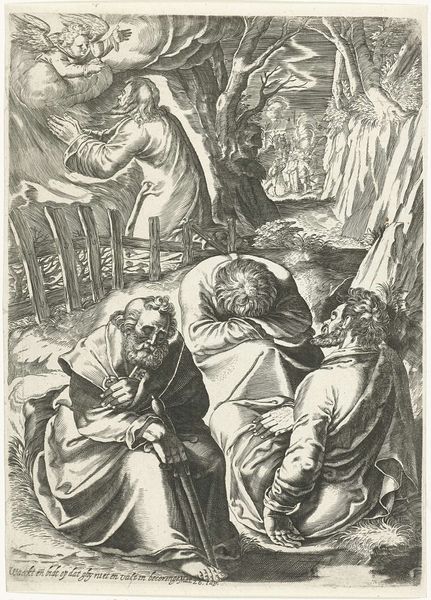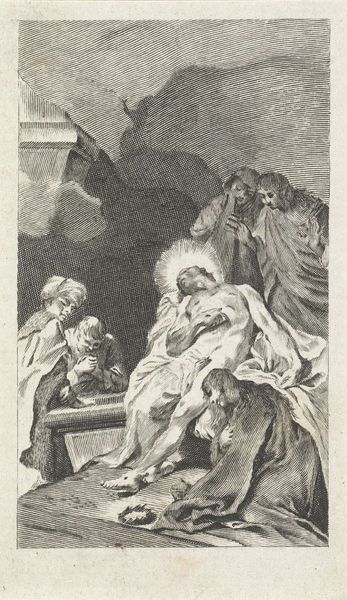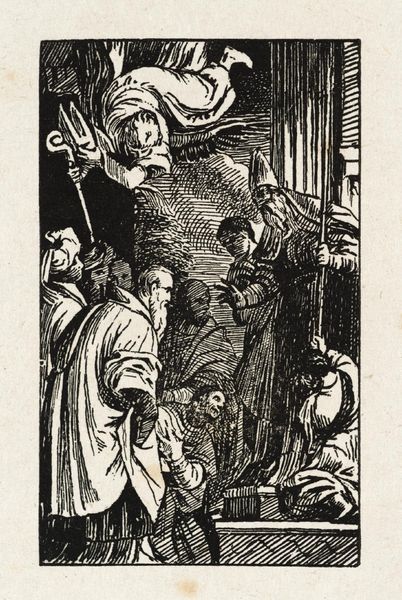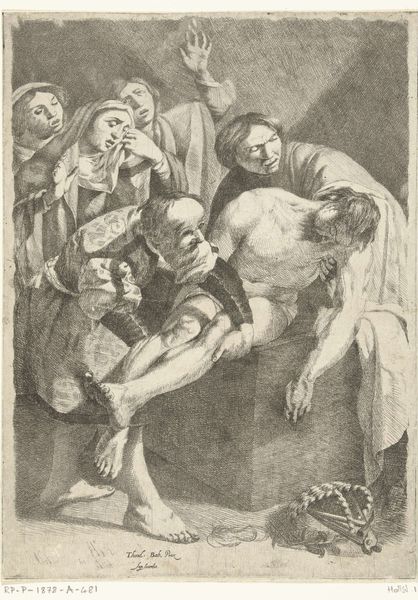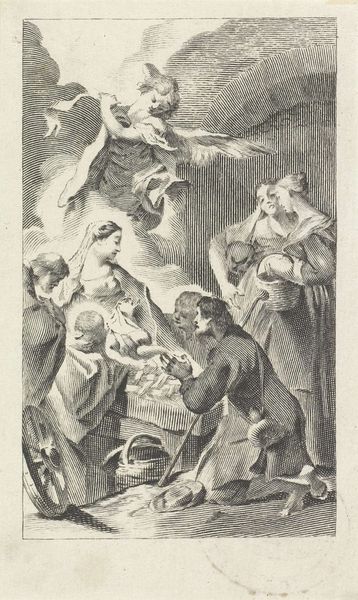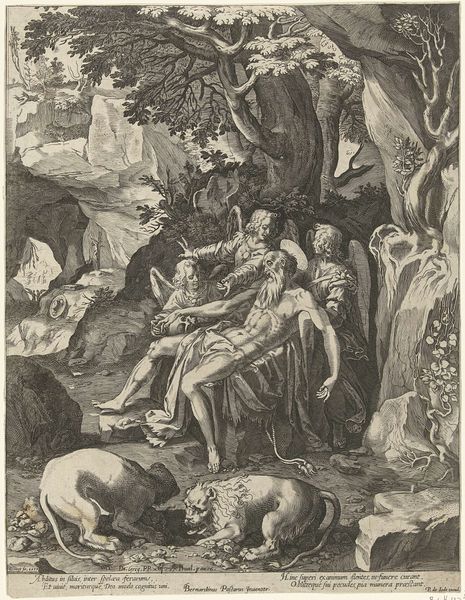
print, engraving
#
baroque
# print
#
old engraving style
#
figuration
#
genre-painting
#
history-painting
#
engraving
Dimensions: height 298 mm, width 194 mm
Copyright: Rijks Museum: Open Domain
Editor: Here we have Theodoor Galle’s "Adoration of the Shepherds," an engraving from around 1612 to 1616. I am immediately drawn to the stark contrast between light and shadow, but I wonder about the societal implications of depicting such a pivotal religious scene in this way. How do you interpret this work through a historical lens? Curator: Considering the socio-political climate of the 17th century, this piece offers a potent commentary on power dynamics. The use of chiaroscuro, that strong contrast you noticed, doesn’t just create drama; it highlights the vulnerability of the infant Christ juxtaposed against the onlookers. Think about the Baroque era, characterized by religious and political upheaval; Galle subtly questions the established order by centering the marginalized - the shepherds - in this act of adoration. Editor: That's fascinating. So the humble shepherds aren't just incidental; they're crucial to understanding the artwork's message? Curator: Exactly. It compels us to consider who is typically excluded from positions of power and recognition. How might Galle be using this religious narrative to challenge societal hierarchies of his time? Consider also the women represented - do they embody agency or simply passive acceptance? Editor: It really reframes my understanding, shifting it from a simple religious scene to a commentary on social justice and the value of the marginalized in Baroque society. Curator: And isn't it incredible how art from centuries ago can still spark such relevant discussions about representation, power, and justice today? Galle’s work demonstrates the enduring power of art as a form of social critique. Editor: It definitely changes how I'll look at Baroque art going forward! Thanks!
Comments
No comments
Be the first to comment and join the conversation on the ultimate creative platform.
